Monthly Archives: April 2016
 We have all heard of the World’s Fair, and I think most of us know about the big push between nations to have it held in their country. After World War II, the United States didn’t get to host the World’s Fair until April 21, 1962. I think that most of us knows of the Seattle Space Needle, and I think that most adults know that it was a part of the World’s Fair, also known as the Century 21 Exposition. The fair ran from April 21, 1962 to October 21, 1962, in Seattle, Washington, of course.
We have all heard of the World’s Fair, and I think most of us know about the big push between nations to have it held in their country. After World War II, the United States didn’t get to host the World’s Fair until April 21, 1962. I think that most of us knows of the Seattle Space Needle, and I think that most adults know that it was a part of the World’s Fair, also known as the Century 21 Exposition. The fair ran from April 21, 1962 to October 21, 1962, in Seattle, Washington, of course.
Nearly 10 million people attended the fair in Seattle that year. So many World’s Fairs did not make a profit, but unlike the other world’s fairs of that era, Century 21 did make a profit. After the expedition, Seattle  was left with a fairground and many public buildings and public works. It really revitalized Seattle’s economic and cultural life. The Space Needle was built there, of course, and the Alweg monorail, as well as several sports venues…Washington State Coliseum, now Key Arena and performing arts buildings…the Playhouse, now the Cornish Playhouse. Many of these have been remodeled or replaced now, but the whole area started around the World’s Fair. The Space Needle was built to withstand wind speeds of 200 mph, double the requirements in the building code of 1962. An earthquake registering 6.8 on the Richter scale jolted the Needle enough in 2001 for water to slosh out of the toilets in the restrooms. The Space Needle will not sustain serious
was left with a fairground and many public buildings and public works. It really revitalized Seattle’s economic and cultural life. The Space Needle was built there, of course, and the Alweg monorail, as well as several sports venues…Washington State Coliseum, now Key Arena and performing arts buildings…the Playhouse, now the Cornish Playhouse. Many of these have been remodeled or replaced now, but the whole area started around the World’s Fair. The Space Needle was built to withstand wind speeds of 200 mph, double the requirements in the building code of 1962. An earthquake registering 6.8 on the Richter scale jolted the Needle enough in 2001 for water to slosh out of the toilets in the restrooms. The Space Needle will not sustain serious  structural damage during earthquakes of magnitudes below 9. I think it is an amazing structure.
structural damage during earthquakes of magnitudes below 9. I think it is an amazing structure.
Since my daughter, Amy Royce and her family have moved to northern Washington, we have had the opportunity to visit the area and the Space Needle. I had been there before, but my husband, Bob had not. It doesn’t matter how many times you go up in the Space Needle, because each time is spectacular. The view is amazing, and since you can walk all the way around it, you have a different view on each side. The area is beautiful to be sure. I don’t know how often Amy and her family will get down there, now that they have moved to the Bellingham/Ferndale area, but I don’t think I would live that close without taking a trip to see a little bit of history once in a while.
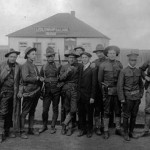 When strikes occur, emotions can get out of control. Sometimes, tensions get so high that they hit the breaking point, and people die. The year was 1914. The date was April 20th. The place was Ludlow, Colorado, and things were about to get out of control. The strike began the previous September, when about 11,000 miners in southern Colorado went on strike against the powerful Colorado Fuel and Iron Corporation. They were protesting low pay, dangerous working conditions, and the company’s autocratic dominance over the workers’ lives. The company was owned by the Rockefeller family and Standard Oil. They responded to the strike by immediately evicting the miners and their families from company-owned housing, which were basically shacks. The United Mine Workers stepped in to help. The miners moved with their families to canvas tent colonies scattered around the nearby hills and the strike continued.
When strikes occur, emotions can get out of control. Sometimes, tensions get so high that they hit the breaking point, and people die. The year was 1914. The date was April 20th. The place was Ludlow, Colorado, and things were about to get out of control. The strike began the previous September, when about 11,000 miners in southern Colorado went on strike against the powerful Colorado Fuel and Iron Corporation. They were protesting low pay, dangerous working conditions, and the company’s autocratic dominance over the workers’ lives. The company was owned by the Rockefeller family and Standard Oil. They responded to the strike by immediately evicting the miners and their families from company-owned housing, which were basically shacks. The United Mine Workers stepped in to help. The miners moved with their families to canvas tent colonies scattered around the nearby hills and the strike continued.
The company had depended on the evictions to end the strike, but when that failed, they hired private detectives to attack the tent colonies with rifles and Gatling guns. The miners fought back and several were killed. The company began to realize that the strikers were determined so Colorado Fuel and Iron Corporation contacted the governor of Colorado, who authorized the use of the National Guard, provided they agree to pay their wages. The strikers mistakenly thought that the governor has sent the National Guard to protect them, but that couldn’t have been further from the truth. The National Guard was under orders to stop the strike…no matter what the cost might be. The National Guard attacked the strikers on April 20, 1914. Two companies of guardsmen attacked the largest tent colony of strikers near the town of Ludlow, home to about 1,000 men, women, and children. The attack began in the morning with a barrage of bullets fired into the tents. The miners shot back with pistols and rifles.
A strike leader was killed while trying to negotiate a truce, and the strikers, fearing that the attacks might intensify. They tried to placed the women and children in pits they had dug beneath the tents. At sunset, the 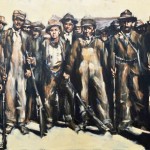 guardsman moved down from the hills and set the tent colony on fire with torches, shooting at the families as they fled into the hills. It wasn’t until the next morning that they discovered the true carnage of their attack. A telephone linesman discovered a pit under one of the tents filled with the burned remains of 11 children and 2 women. The Ludlow Massacre outraged many Americans, nevertheless, the tragedy did little to help the Colorado miners and their families. Federal troops were sent to assure the end of the strike, and the strike failed to achieve any significant improvement in their wages and working conditions. Sixty-six men, women, and children died during the strike, but not a single militiaman or private detective was charged with any crime. Sometimes, the worst injustice comes from the very people who are supposed to protect us.
guardsman moved down from the hills and set the tent colony on fire with torches, shooting at the families as they fled into the hills. It wasn’t until the next morning that they discovered the true carnage of their attack. A telephone linesman discovered a pit under one of the tents filled with the burned remains of 11 children and 2 women. The Ludlow Massacre outraged many Americans, nevertheless, the tragedy did little to help the Colorado miners and their families. Federal troops were sent to assure the end of the strike, and the strike failed to achieve any significant improvement in their wages and working conditions. Sixty-six men, women, and children died during the strike, but not a single militiaman or private detective was charged with any crime. Sometimes, the worst injustice comes from the very people who are supposed to protect us.
 Running for exercise has not always been as common an occurrence as it is these days. Before machinery, cars, and other modern conveniences, people walked to many of the places they went, and so the thought of specifically walking or running to get exercise was pretty foreign. Nevertheless, there were races, and sporting events, so it wasn’t unheard of to run or walk for exercise. Most people have heard of the Boston Marathon…especially after the bombing that took place there April 15, 2013. The marathon has been a runners biggest goal since its first event, held on April 19, 1897. The marathon was an event that came from the dream of Boston Athletic Association member and inaugural US Olympic team manager, John Graham, who was inspired by the marathon at the first modern Olympic Games in Athens in 1896. He immediately set out to bring the race home to the United States. Graham enlisted the help of Herbert H Holton, a Boston businessman. They considered various routes, before a measured distance of 24.5 miles from the Irvington Oval in Boston to Metcalf’s Mill in Ashland was eventually selected.
Running for exercise has not always been as common an occurrence as it is these days. Before machinery, cars, and other modern conveniences, people walked to many of the places they went, and so the thought of specifically walking or running to get exercise was pretty foreign. Nevertheless, there were races, and sporting events, so it wasn’t unheard of to run or walk for exercise. Most people have heard of the Boston Marathon…especially after the bombing that took place there April 15, 2013. The marathon has been a runners biggest goal since its first event, held on April 19, 1897. The marathon was an event that came from the dream of Boston Athletic Association member and inaugural US Olympic team manager, John Graham, who was inspired by the marathon at the first modern Olympic Games in Athens in 1896. He immediately set out to bring the race home to the United States. Graham enlisted the help of Herbert H Holton, a Boston businessman. They considered various routes, before a measured distance of 24.5 miles from the Irvington Oval in Boston to Metcalf’s Mill in Ashland was eventually selected.
Fifteen runners started that first race, but only ten would finish. The winner was John J McDermott, who finished with a time of 2 hours, 55 minutes, and 10 seconds. McDermott was sponsored by the Pastime Athletic Club of New York City. He took the lead from Harvard athlete, Dick Grant over the hills in Newton. He did walk several times during the final miles, but still won by a comfortable margin of 6 minutes and 52 seconds. He had only won one other marathon in the United States…the previous October in New York City.
As most people know, a marathon is normally 26.2 miles, and the original Boston Marathon was only 24.5. That was changed in 1908 so that it would be in compliance with the rules of a marathon. The marathon was originally held on Patriot’s Day, April 19, a holiday that commemorates the beginning of the Revolutionary War. When Patriot’s Day fell on Sunday, the race was held the following Monday. Then when Patriot’s Day was made a Monday holiday in 1969, the Boston Marathon moved with it, and it has been that way since that time.
Originally, women were not allowed to run in the Boston Marathon, which made a lot of women angry. That rule finally changed in 1972, but not without a few missteps first. In 1966, Roberta “Bobbi” Gibb decided to fight the system. She became the first woman to run the entire Boston Marathon, but had to hide in the bushes near the start until the race began. In 1967, Kathrine Switzer, who had registered as “K. V. Switzer”, was the first woman to run with a race number. Switzer finished even though officials tried to physically remove her from the race after she was identified as a woman. In the fall of 1971, the Amateur Athletics Union permitted  its sanctioned marathons, including Boston, to allow women to enter. Nina Kuscsik became the first official female participant to win the Boston Marathon in 1972. Seven other women started and finished that race. In 1975, the Boston Marathon became the first major marathon to include a wheelchair division competition, which Bob Hall won in 2 hours, 58 minutes.
its sanctioned marathons, including Boston, to allow women to enter. Nina Kuscsik became the first official female participant to win the Boston Marathon in 1972. Seven other women started and finished that race. In 1975, the Boston Marathon became the first major marathon to include a wheelchair division competition, which Bob Hall won in 2 hours, 58 minutes.
Exercise has become a regular part of the lives of many people these days, whether they walk, run, bicycle, or some other form of exercise. While I can’t imagine myself running in a marathon…or any other race, I could see myself walking such a distance. Once you get started with exercise, it can become very addictive, and that’s ok too.
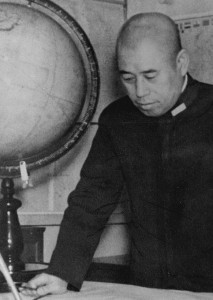 Some soldiers, no matter what side they are on or what branch of service they are in, are so good at what they do, that they become a must kill to the enemy. Admiral Isoroku Yamamoto was just such a soldier. Yamamoto held several important posts in the Imperial Japanese Navy, and undertook many of its changes and reorganizations, especially its development of naval aviation. He was the commander-in-chief during the early years of the Pacific War and so was responsible for major battles such as Pearl Harbor and Midway. That meant that the Unites States had a score to settle with the admiral. Nevertheless, this would be no easy task. The Japanese codes were difficult to break, and so locating the admiral at a time when they could be prepared to shoot him down was not going to be easy.
Some soldiers, no matter what side they are on or what branch of service they are in, are so good at what they do, that they become a must kill to the enemy. Admiral Isoroku Yamamoto was just such a soldier. Yamamoto held several important posts in the Imperial Japanese Navy, and undertook many of its changes and reorganizations, especially its development of naval aviation. He was the commander-in-chief during the early years of the Pacific War and so was responsible for major battles such as Pearl Harbor and Midway. That meant that the Unites States had a score to settle with the admiral. Nevertheless, this would be no easy task. The Japanese codes were difficult to break, and so locating the admiral at a time when they could be prepared to shoot him down was not going to be easy.
Finally, on April 18, 1943, the code breakers successfully broke the code, leaving the admiral vulnerable to attack, and Operation Vengence was born. The sole purpose of this mission was to kill Admiral Isoroku Yamamoto. The mission took place during the Solomon Islands campaign in the Pacific Theater of World War II. The code breakers found out that the admiral was set to be onboard a transport plane that would be flying over Bougainville Island. With everything finally in place, his transport bomber aircraft was shot down by United States Army Air Forces fighter aircraft operating from Kukum Field on Guadalcanal. It was a day to celebrate. The United States had been nursing a black eye where Pearl Harbor was concerned, and they had been looking to settle the score. Operation Vengence was the victory they had been waiting for.
The admiral’s death was a major blow to Japanese 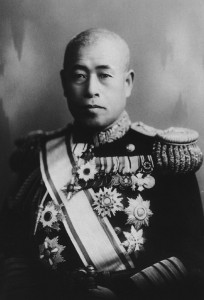 military morale during World War II, and was a major boost to the Allied Forces. The operation was intended as revenge for the Pearl Harbor attack which initiated the formal state of war between Imperial Japan and the United States.
military morale during World War II, and was a major boost to the Allied Forces. The operation was intended as revenge for the Pearl Harbor attack which initiated the formal state of war between Imperial Japan and the United States.
After the war, there was debate over which of the US fighter pilots involved in the raid deserved the official credit for downing Yamamoto due to conflicting first-hand reports from the participants, and has never been entirely resolved. I suppose that for the pilots it was a big deal, but for the US citizens it wasn’t the pilot that mattered, but rather that the mission had been successful. Americans hate to lose, and we will go after the villan who dared to attack us.
 After her divorce, my sister-in-law, Jennifer Schulenberg Parmely met a man named Brian Cratty. Brian is a pilot and for many years his work was as a pilot for the Life Flight team. Brian and Jennifer are well suited to each other in many ways…such as their work in the medical field. They have spent their lives meeting the medical needs of others, but in very different ways. Jennifer as an Obstetrics nurse, and Brian as a Life Flight pilot. Brian has since retired from his job as a Life Flight pilot, and now is a private pilot, who still flies for others occasionally.
After her divorce, my sister-in-law, Jennifer Schulenberg Parmely met a man named Brian Cratty. Brian is a pilot and for many years his work was as a pilot for the Life Flight team. Brian and Jennifer are well suited to each other in many ways…such as their work in the medical field. They have spent their lives meeting the medical needs of others, but in very different ways. Jennifer as an Obstetrics nurse, and Brian as a Life Flight pilot. Brian has since retired from his job as a Life Flight pilot, and now is a private pilot, who still flies for others occasionally.
Brian and Jennifer are really good friends. They both enjoy the same things. They hike, ski, run, and they love to travel. They also spend quite a bit of time at their cabin on Casper Mountain. In fact, the mountain is such a big part of their lives that they had a house built a while back that is in the foothills of Casper Mountain. That way, they can go for a hike before the get going on their day, and they don’t have to go very far to do it. In fact it was the love of hiking that we all share, that placed so many of the right people with me when I fell on the Bridle Trail and broke my shoulder. Each one of those people played their part, and I will be forever grateful. Brian and I also have something else in common…physical therapy. He recently had to have Rotator Cuff surgery done, and was taking  physical therapy too…something that neither of us wanted to have in common…ever, but there it is. I have since been released, and I’m sure he has too, and I hope his shoulder is doing as well as mine is, because the shoulder is more important than we realize sometimes.
physical therapy too…something that neither of us wanted to have in common…ever, but there it is. I have since been released, and I’m sure he has too, and I hope his shoulder is doing as well as mine is, because the shoulder is more important than we realize sometimes.
Brian is rather a quiet man, and tries not to be intrusive on family matters, but I think I speak for everyone, when I say that we all consider him an important part of this family. I suppose that the longer he is in this family, the less an outsider he will feel…or maybe, like many people, he will always be a quiet man. I am often that way, so I can completely relate to it. I think some people are just listeners. Today is Brian’s birthday. Happy birthday Brian!! Have a great day!! We love you!!
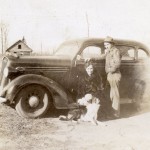
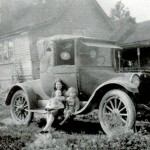 Most cars, these days, have a fairly streamlined design. Much of this is to make them more fuel efficient, and to make the ride less wind resistant, and therefore smoother, I’m sure. It wasn’t always that way, however. For a time, running boards were quite fashionable, and most cars had them. I never could really see the draw to that, because in reality, actually stepping on the running boards, to get into the car, loosens them, and will eventually cause them to need to be reinforced. I suppose my opinion on this comes from my 41 years married to a mechanic, but it is nevertheless, a reality. Many of the cars from my parents’ and in-laws’ era had running boards, especially the pickups, but it is something that is not seen as much these days, and if it is, it is usually something that was added later on, and as I said, not really for use as a way to enter the vehicle, but rather for show.
Most cars, these days, have a fairly streamlined design. Much of this is to make them more fuel efficient, and to make the ride less wind resistant, and therefore smoother, I’m sure. It wasn’t always that way, however. For a time, running boards were quite fashionable, and most cars had them. I never could really see the draw to that, because in reality, actually stepping on the running boards, to get into the car, loosens them, and will eventually cause them to need to be reinforced. I suppose my opinion on this comes from my 41 years married to a mechanic, but it is nevertheless, a reality. Many of the cars from my parents’ and in-laws’ era had running boards, especially the pickups, but it is something that is not seen as much these days, and if it is, it is usually something that was added later on, and as I said, not really for use as a way to enter the vehicle, but rather for show.
Be that as it may, running boards were something that used to be important, so they say, because of the fact that vehicles were higher off the ground back in the day, than they are now. The fashionable running boards of this day and age are pretty narrow, and really aren’t very much like the old ones at all. The old running boards were wide, and could easily be used for a seat, or even to give enough room for an adult to lie down on them. I remember my mom telling me about one of her brothers who used to take an afternoon nap out on the running board of my grandfather’s car. I always thought that was rather comical, but she used to say that her dad always had to walk around the car to make sure there wasn’t a kid on the running board on the other side, before he could leave for wherever he was going.
It also seems that the running boards of a car make a great place to gather the family for pictures, because 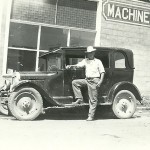
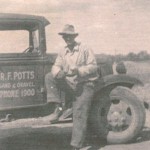 there are pictures of people sitting or standing on the running boards among my family’s pictures, as well as Bob’s family’s pictures. The car seems to have been the backdrop of choice at that time. I suppose it ‘s not so different today. People like their cars, and they are a part of life, with or without running boards, so why not include them in your pictures sometimes…especially if they are a hot car, which I’m sure was the case at the time, even if we wouldn’t think so these days. The look of cars changes from era to era, and while the big clunkers of old, were not the sporty cars of today, they were cool then.
there are pictures of people sitting or standing on the running boards among my family’s pictures, as well as Bob’s family’s pictures. The car seems to have been the backdrop of choice at that time. I suppose it ‘s not so different today. People like their cars, and they are a part of life, with or without running boards, so why not include them in your pictures sometimes…especially if they are a hot car, which I’m sure was the case at the time, even if we wouldn’t think so these days. The look of cars changes from era to era, and while the big clunkers of old, were not the sporty cars of today, they were cool then.
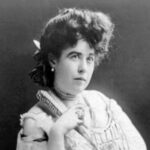 It’s strange…how often society prefers old money to new money. Maybe these days it’s not as common, but in the late 1800s, it was a little bit more common. That was the world Margaret Tobin grew up in. Who is Margaret Tobin, you might ask. Well, we didn’t really remember her as Margaret Tobin, but rather as Molly Brown…or more likely as The Unsinkable Molly Brown. That’s because on this day April 15, 1912, Molly Brown not only survived the sinking of the Titanic, but she heroically saved other people in the water, and kept the people in the lifeboat calm with her stories of life in the west.
It’s strange…how often society prefers old money to new money. Maybe these days it’s not as common, but in the late 1800s, it was a little bit more common. That was the world Margaret Tobin grew up in. Who is Margaret Tobin, you might ask. Well, we didn’t really remember her as Margaret Tobin, but rather as Molly Brown…or more likely as The Unsinkable Molly Brown. That’s because on this day April 15, 1912, Molly Brown not only survived the sinking of the Titanic, but she heroically saved other people in the water, and kept the people in the lifeboat calm with her stories of life in the west.
Molly was born the daughter of an impoverished ditch-digger. As a teenager, Molly went West to join her brother, who was working in the booming silver mining town of Leadville, Colorado. While there, the manager of a local silver mine, James J Brown, noticed her, and they fell in love. The couple married in 1886, and a short time later, James Brown discovered a large deposit of gold. They quickly became very wealthy. They moved to Denver, and tried unsuccessfully to take what should have been their rightful place in society, but the high society of the time…old money, just weren’t prepared to let these unstart, new money people with little social grooming into their ranks. Apparently Molly was a little too flamboyant for the stuffy, old money high society people. She was a little too much for her husband too, because they soon separated, and with her estranged husband’s financial support, Molly was able to live comfortably…for a time anyway…until most of the money ran out.
Molly left Denver and decided to travel. The Eastern elite, didn’t seem to mind Molly’s flamboyance, and soon accepted her as one of them. Socially prominent eastern families like the Astors and Vanderbilts prized her frank western manners and her thrilling stories of frontier life. It was her friendship with these people that brought her to the Titanic, on that fateful trip, but it was Molly herself and her heroic ways that brought her fame, even though 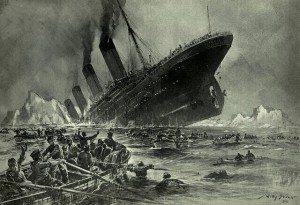 she obviously wasn’t the only woman who survived the sinking. After the ship hit an iceberg and began to sink, Brown was tossed into a lifeboat. She took command of the little boat and helped rescue a drowning sailor and other victims. To keep spirits up, she regaled the anxious survivors with stories of her life in the Old West. One the newspapers heard of her heroics, she gained national fame. She was dubbed “the unsinkable Mrs. Brown” and she became an international heroine. Before very long though, the money ran out, and she faded into obscurity, dying a woman of modest means in New York City in 1932. It was the Broadway musical that would revive her claim to fame, and change her title to The Unsinkable Molly Brown.
she obviously wasn’t the only woman who survived the sinking. After the ship hit an iceberg and began to sink, Brown was tossed into a lifeboat. She took command of the little boat and helped rescue a drowning sailor and other victims. To keep spirits up, she regaled the anxious survivors with stories of her life in the Old West. One the newspapers heard of her heroics, she gained national fame. She was dubbed “the unsinkable Mrs. Brown” and she became an international heroine. Before very long though, the money ran out, and she faded into obscurity, dying a woman of modest means in New York City in 1932. It was the Broadway musical that would revive her claim to fame, and change her title to The Unsinkable Molly Brown.
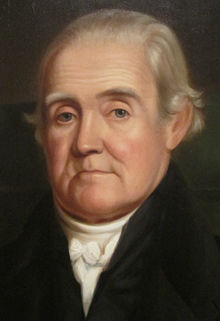 I don’t think that we spend very much time considering the importance of words in our lives, and yet, they are a vital part of our lives. Whether we speak the words, sign the words, write the words, or type the words, words are a vital part of communication. We are isolated without them, and we are indeed, isolated when we don’t understand them or know their meaning. When the United States was first formed…a melting pot of people from different countries…all with different languages. Communication under those circumstances if difficult at best, and often impossible. People tend to stick to their own family and friends from their country, so they can talk to each other. Eventually, through trial and error, people began to learn the chosen language of the United States…English.
I don’t think that we spend very much time considering the importance of words in our lives, and yet, they are a vital part of our lives. Whether we speak the words, sign the words, write the words, or type the words, words are a vital part of communication. We are isolated without them, and we are indeed, isolated when we don’t understand them or know their meaning. When the United States was first formed…a melting pot of people from different countries…all with different languages. Communication under those circumstances if difficult at best, and often impossible. People tend to stick to their own family and friends from their country, so they can talk to each other. Eventually, through trial and error, people began to learn the chosen language of the United States…English.
Still, there are many words, and if you don’t know their meaning, or don’t know how to spell them, communication again becomes stalled, and isolation sets in. I think that might have been what Noah Webster had in mind, when he decided to publish his American Dictionary of the English Language. Noah Webster was a Yale educated attorney who had a huge interest language and education. He decided that people needed a way to learn to speak better, to know the meanings of words, and to know how to spell them, so on this day in 1818, he published his first dictionary. His dictionary was unique in that it was one of the first lexicons to include distinctly American words. Over the years, it has had to be changed, simply because as new things are invented, there have to be words invented to describe them. That makes the dictionary an ever changing book that would need to be updated often.
Noah’s dictionary took more that two decades to complete, and in it were 10,000 “Americanisms”…words that 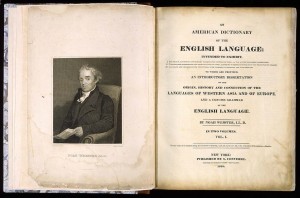 were unique to America. The dictionary standardized English spelling, a process that started as early as 1473, when printer William Caxton published the first book printed in English. The fact that dictionaries were printed so quickly and dictionaries were updated so often, resulted in increasingly standardized spellings by the mid 1800s. Coincidentally, Samuel Johnson’s Dictionary of the English Language was published almost exactly 63 years earlier, on April 15, 1755. Nevertheless, Webster’s dictionary quickly became the standard, and without it, the English language would not be the amazing language it is today. I never really gave much thought to language or words in general, until I began writing on a regular basis, and discovered my love of words.
were unique to America. The dictionary standardized English spelling, a process that started as early as 1473, when printer William Caxton published the first book printed in English. The fact that dictionaries were printed so quickly and dictionaries were updated so often, resulted in increasingly standardized spellings by the mid 1800s. Coincidentally, Samuel Johnson’s Dictionary of the English Language was published almost exactly 63 years earlier, on April 15, 1755. Nevertheless, Webster’s dictionary quickly became the standard, and without it, the English language would not be the amazing language it is today. I never really gave much thought to language or words in general, until I began writing on a regular basis, and discovered my love of words.
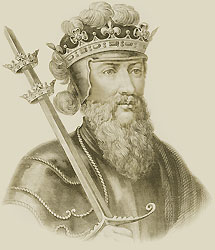 Before scientists learned how to predict the weather, and before the weather predicting equipment came into being, people often found themselves outside, without any place to get under cover, during some really bad storms. Such was the case on Monday, April 13, 1360…later dubbed Black Monday, when a hail storm killed approximately 1,000 English soldiers in Chartres, France. England and France were in the middle of the Hundred Years’ War. The war began in 1337, and by 1359, King Edward III of England was pushing forward to conquer France. In October he sent a massive force across the English Channel to Calais. The French wouldn’t fight back, but rather stayed behind protective walls that Winter, allowing the King Edward’s men to pillage the countryside.
Before scientists learned how to predict the weather, and before the weather predicting equipment came into being, people often found themselves outside, without any place to get under cover, during some really bad storms. Such was the case on Monday, April 13, 1360…later dubbed Black Monday, when a hail storm killed approximately 1,000 English soldiers in Chartres, France. England and France were in the middle of the Hundred Years’ War. The war began in 1337, and by 1359, King Edward III of England was pushing forward to conquer France. In October he sent a massive force across the English Channel to Calais. The French wouldn’t fight back, but rather stayed behind protective walls that Winter, allowing the King Edward’s men to pillage the countryside.
Then in April of 1360 King Edward’s forces burned the Paris suburbs and marched  toward Chartres. The night of April 13, while they were camped outside the town, planning a dawn attack, a sudden storm developed. Lightning struck, killing several soldiers, and hailstones began pelting the men, and scattering the horses. One man described it as “a foul day, full of myst and hayle, so that the men dyed on horseback” Two of the English leaders were killed and the troops panicked…they had no shelter from the storm. They were at it’s mercy. King Edward’s forces suffered heavy losses that some of the men saw as a sign from God, that they should not be fighting against France. King Edward was convinced that they needed to negotiate peace with the French, and on May 8, 1360, the Treaty of Bretigny was signed, marking the end of the first phase of the Hundred Years’ War. King Edward renounced all claims to the throne of France, but he was given control of the land in the north of the country. Nine years later, fighting resumed
toward Chartres. The night of April 13, while they were camped outside the town, planning a dawn attack, a sudden storm developed. Lightning struck, killing several soldiers, and hailstones began pelting the men, and scattering the horses. One man described it as “a foul day, full of myst and hayle, so that the men dyed on horseback” Two of the English leaders were killed and the troops panicked…they had no shelter from the storm. They were at it’s mercy. King Edward’s forces suffered heavy losses that some of the men saw as a sign from God, that they should not be fighting against France. King Edward was convinced that they needed to negotiate peace with the French, and on May 8, 1360, the Treaty of Bretigny was signed, marking the end of the first phase of the Hundred Years’ War. King Edward renounced all claims to the throne of France, but he was given control of the land in the north of the country. Nine years later, fighting resumed  when the King of France claimed that King Edward had not honored the treaty. the last phase of the Hundred Years’ War finally ended in 1453.
when the King of France claimed that King Edward had not honored the treaty. the last phase of the Hundred Years’ War finally ended in 1453.
Hailstones have long been known to be very deadly. The larger the stone, of course, the more deadly it is. Some have been known to crush the roofs of cars. The largest hailstone recorded in modern times was found in Aurora, Nebraska. It was seven inches in diameter, about the size of a soccer ball. Hail typically falls at about 100 miles per hour, which explains why getting hit with one can really hurt you, no matter how small the stone might be, and why huge hailstones would mean instant death.

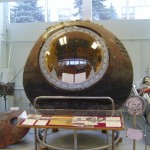 Many things changed on the day, Jennifer Schulenberg Parmely, my sister-in-law, was born. No, it wasn’t something that she or her parents did, but rather in the world. On this day, April 12, in 1961, the year Jennifer was born, the world saw it’s very first manned space flight. That was the day that the Race to Space ended with Russia putting the first man in space. That man was Yuri Gagarin. The United States had hoped to win that race, but we were not ready to put our first manned space flight into space for another month. I’m sure that all this meant nothing to Jennifer, or her parents, Walt and Joann Schulenberg, but it is, nevertheless, a historical fact, and it happend on the day she was born.
Many things changed on the day, Jennifer Schulenberg Parmely, my sister-in-law, was born. No, it wasn’t something that she or her parents did, but rather in the world. On this day, April 12, in 1961, the year Jennifer was born, the world saw it’s very first manned space flight. That was the day that the Race to Space ended with Russia putting the first man in space. That man was Yuri Gagarin. The United States had hoped to win that race, but we were not ready to put our first manned space flight into space for another month. I’m sure that all this meant nothing to Jennifer, or her parents, Walt and Joann Schulenberg, but it is, nevertheless, a historical fact, and it happend on the day she was born.
Jennifer grew up, and became the mother of three boys, Barry, JD, and Eric. There was hope that she would have a daughter, but that was not to be. It seemed to be some kind of tradition in the Schulenberg family…at least with the grandchildren and great grandchildren. Whatever the first baby was, the others in that family were the same. The only one to break that tradition to date is my daughter Amy Royce, who managed to have a girl and then, shocker…a boy. All the others in the family have one or the other. That didn’t leave Jennifer much hope of having a granddaughter either, but Eric and his wife, Ashley broke with the boy tradition in Jennifer’s family and had two girls, Reagan and Hattie. They still kept with the tradition of what the first one is the others are too, however. Of course, there is always a possibility that they will try again for the boy, and maybe…just maybe, they will succeed like Amy did. Until that time, Jennifer is enjoying the little girls she never got to have, and that is very nice for her, because they are little sweeties, for sure.
Jennifer is a nurse at Wyoming Medical Center, and has worked there since she was just seventeen. She 
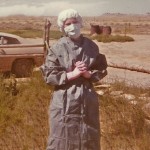 started as a Candy Striper, and after college, was hired in the Obstetrics department as a nurse. She has always loved newborn babies, and this way she gets to see lots of them, but the good news is that she can hold them and then give them back to their mothers, because as most mothers know, there is a time to have your babies, and a time to be the one to just spoil those babies and let their parents handle the fallout. It’s called being the grandma, and believe me, it’s awesome, as any grandmother will tell you. Today is Jennifer’s birthday. Happy birthday Jennifer!! Have a great day!! We love you!!
started as a Candy Striper, and after college, was hired in the Obstetrics department as a nurse. She has always loved newborn babies, and this way she gets to see lots of them, but the good news is that she can hold them and then give them back to their mothers, because as most mothers know, there is a time to have your babies, and a time to be the one to just spoil those babies and let their parents handle the fallout. It’s called being the grandma, and believe me, it’s awesome, as any grandmother will tell you. Today is Jennifer’s birthday. Happy birthday Jennifer!! Have a great day!! We love you!!

